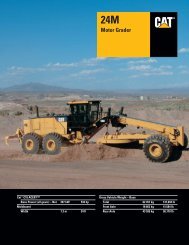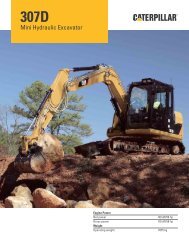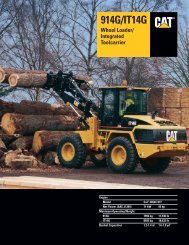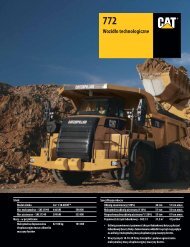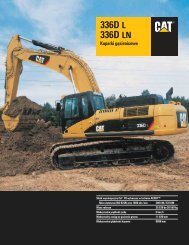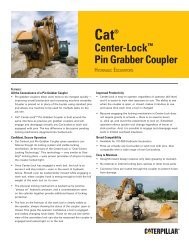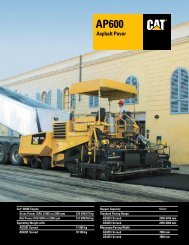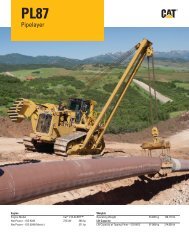Engine
Engine
Engine
You also want an ePaper? Increase the reach of your titles
YUMPU automatically turns print PDFs into web optimized ePapers that Google loves.
ARC<br />
1 2<br />
1 Service Brake Sensor<br />
2 <strong>Engine</strong> Sensor<br />
3 ARC<br />
4 ARC Switch<br />
5 Brakes<br />
6 Service Brakes<br />
7 Axle Speed Sensor<br />
8 TCS<br />
6<br />
7<br />
TCS<br />
3<br />
7<br />
8<br />
5<br />
6<br />
4<br />
Automatic Retarder Control (ARC).<br />
Standard ARC electronically controls<br />
braking on grade to maintain engine at<br />
approximately 1,900 rpm (adjustable<br />
from 1,850-1,950 rpm in increments<br />
of 10). ARC is deactivated when the<br />
operator applies the brakes or throttle.<br />
<strong>Engine</strong> Speed (rpm)<br />
2500<br />
2000<br />
1500<br />
1000<br />
500<br />
0<br />
10<br />
20 30 40 50 60<br />
Time (Seconds)<br />
With Automatic Retarder Control<br />
(average speed, 1950 rpm)<br />
With Manual Retarder Control<br />
(average speed, 1730 rpm)<br />
• Faster Speeds. ARC allows the<br />
operator to maintain optimum engine<br />
speeds for up to 15 percent faster<br />
downhill hauls and greater productivity.<br />
70<br />
• Superior Control. Automatic brake<br />
modulation offers a smoother ride and<br />
better control in slippery conditions,<br />
allowing the operator to concentrate<br />
on driving.<br />
• Ease of Operation. ARC increases<br />
operating ease, resulting in greater<br />
operator confidence with less fatigue.<br />
• <strong>Engine</strong> Overspeed Protection.<br />
Automatically activates ARC when<br />
engine speed exceeds factory preset<br />
levels, regardless of operator inputs,<br />
to avoid potentially damaging engine<br />
overspeeds.<br />
Traction Control System (TCS)<br />
(optional). Electronically monitors and<br />
controls rear wheel slippage for greater<br />
traction and enhanced truck performance<br />
in poor underfoot conditions. If slippage<br />
exceeds a set limit, the oil-cooled disc<br />
brakes engage to slow the spinning wheel.<br />
Torque is then automatically transferred<br />
to the wheel with better traction.<br />
Differential Action. Normal differential<br />
action provides superior maneuvering<br />
and control in slippery conditions.<br />
Compression Brake (optional). Optional<br />
Compression Brake is integrated with<br />
Automatic Retarder Control (ARC)<br />
to provide up to 35 percent higher<br />
downhill travel speed and reduce wear<br />
on brake components.<br />
11



